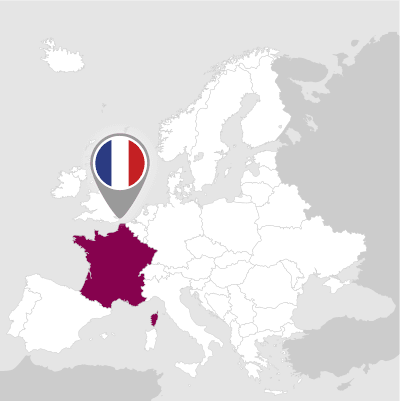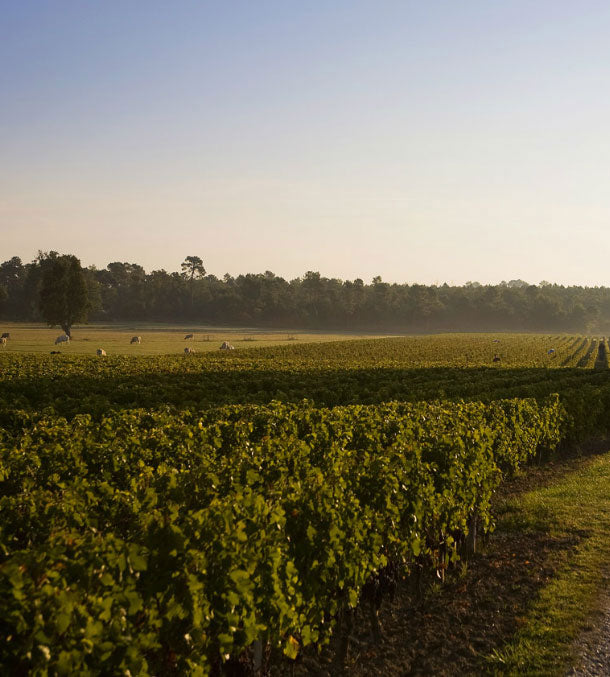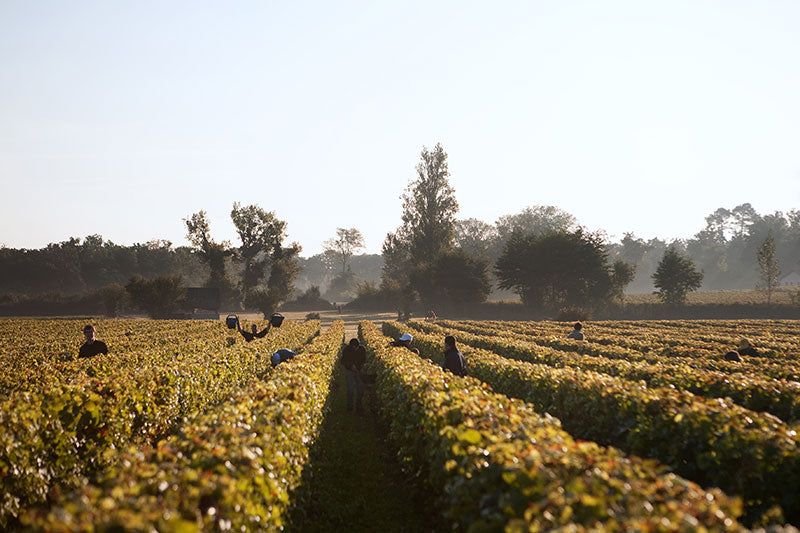Bordeaux is the cradle of French wine: its 2000-year history of winemaking, its unmistakable Bordeaux red and enchanting Châteaux give it an aura of majesty. The variety of Bordeaux wines is wide and offers different but recognisable flavours. The advent of wine-growing in the area is owed to the Romans; however, the birth of the Bordeaux vineyard dates back to the 12th century, sanctioned by the marriage between King Henry Plantagenet of England and Eleanor of Aquitaine, which started the wine trade from Aquitaine to England. At the end of English rule in 1500, trade with London came to a halt, but a flourishing trade with Holland began. With the advent of the 18th century, the purchase of wine estates by the political class gave a new impetus to the production of Bordeaux wines with the emergence of wine ageing in bottles. The Napoleonic period restored trade with the English and there was the first classification of the vineyards of Sauternes-Barsac and Médoc-Graves, with the definition of ' cru classé' and the meaning of 'château'. Undisputed masters are the Bordeaux reds made from the territory's 3 emblematic grapes: cabernet, sauvignon, merlot and cabernet franc. xtraWine devotes a large section to Bordeaux red wines, proposing bottles from the best vintages of 2014 and 2015 that received major awards from Hachette. All the Bordeaux wines recommended by xtraWine are distinguished by their characteristic warm, intense and enveloping flavour, produced by major wineries such as: Château Guiraud, Château d'Yquem, Château Du Retout, Château Mont-Perat, Dourthe, Kressmann and Reignac.
Bordeaux: The best Bordeaux wines on offer
An error occurred while loading the products.
Reload the products
Reload the products
No products found
Use fewer filters or remove all
Use fewer filters or remove all

Bordeaux
Bordeaux
| Country name | France |
| History | Probably the Romans were the first to plant the vineyard in Bordeaux, and the first to describe the area was the poet Ausonius (310-393 AD). He is also the first Bordeaux winemaker we know, with his quarter of a hectare of vineyards near the Garonne river. It has also given its name to the prestigious Château Ausine vineyard in the St. Emilion. In the centuries following the Roman era we have little evidence of Bordeaux and its viticulture, and it is only in the twelfth century that viticulture takes off. In 1200 there were vineyards in the Bourg, in Blaye, in the lower Dordogne and in the valleys of the Garonne river. The Graves was already then an important wine-growing area, where Pape Clémant is the oldest vineyard in the area. At that time, the Médoc was still a swamp, and only around the middle of the seventeenth century it was drained by the Dutch, who in that way created the conditions for the noble wines of Médoc 1er cru. |
| Perc white grape | 1 |
| Soil and climate | Thanks to the proximity of the Atlantic, Bordeaux has a maritime climate with mild winters and quite cool summers. The pine forest along the sea to the north-east protects the area from the winds. July is the month with more hours of sunshine, but August is the hottest month. Precipitation can, from time to time, be abundant. |
| Typical dishes | From the famous entrecôte to the prawns, through the porcini mushrooms and snails, local products are prepared à la bordelaise, named after the sauce made with red wine and shallot. The Bordeaux lamprey is representative of these specialties: fished in the Gironde estuary, this migratory fish is cooked with Médoc wine, leeks and a bouquet garni of aromas. From mid-February to the end of March, you can try this course at chez Fernand, a bistro with a terrace overlooking the Bordeaux riverside, a UNESCO World Heritage Site. The whole South West is an ode to nature: asparagus, porcini, prunes, apples, walnuts and chestnuts add flavor to geese and ducks, whose breeding is a real cult. Poie gras poêlée, duck fillet, goose rillettes ... they are never lacking in restaurant menus. From Samatan, in the Gers, to Thiviers in the Dordogne, passing from Monségur in the Gironde or Saint-Sever in the Landes, visit the picturesque marchés au gras that take place throughout the winter: you will find capons, ducks, geese, and the famous foie gras Duck of the South West, now a symbol of French gastronomy that enjoys the PGI (Protected Geographical Indication) mark. Learn how to cook it with the chefs of Quai des Saveurs, in Bordeaux. |
| Typical products | The red vines are Cabernet Sauvignon, Cabernet Franc, Merlot, Malbec (Cot) and Petit Verdot. The differences between the various castles and districts depend to a large extent on the proportions between these vines. The vine that is most associated with Bordeaux is Cabernet Sauvignon, a vine with small grape and a very strong character of blackcurrant and cedar wood. Merlot is the most cultivated grape variety in Bordeaux, which has increased significantly in recent years. The merlot matures before and should not be aged as long as the Cabernet Sauvignon. Cabernet Franc has much in common with its relative cabernet sauvignon. Cabernet Franc has larger grains than Cabernet Sauvignon and the wines are often less dense. Malbec is sometimes used in Bordeaux to give color and tannins to wines. Petit Verdot has a good acidity and noble tannins, thus contributing to its quality and longevity. |


